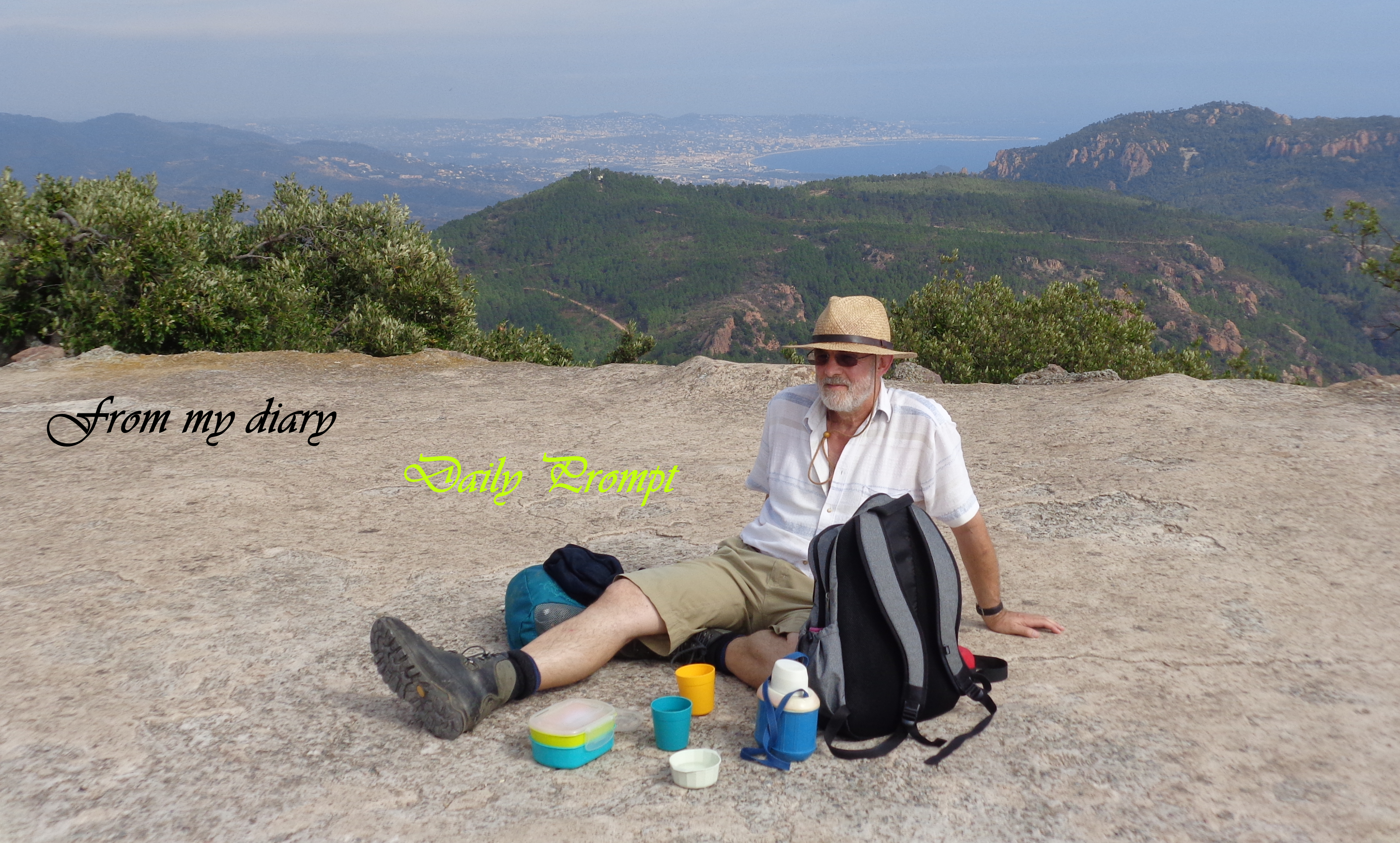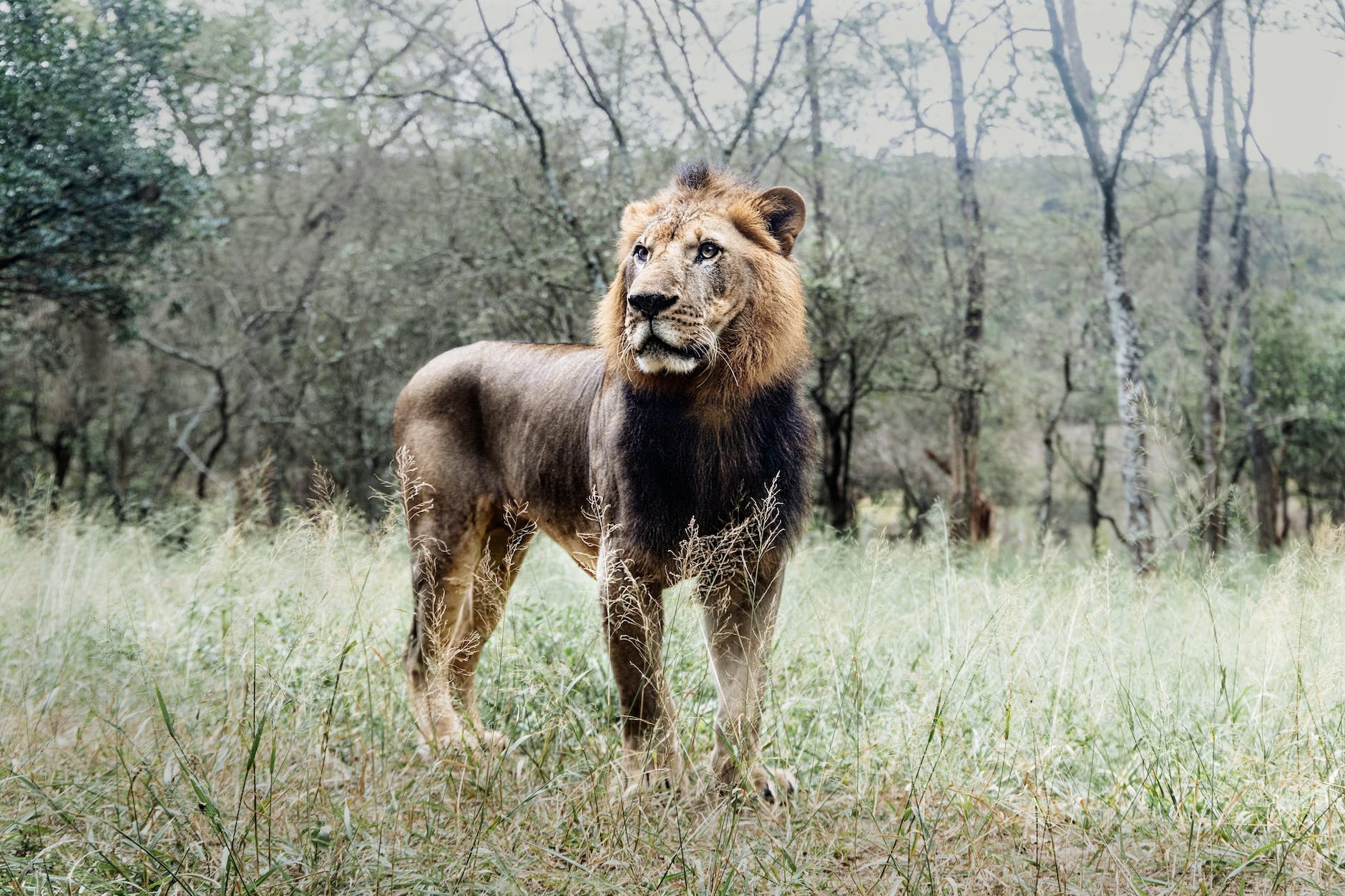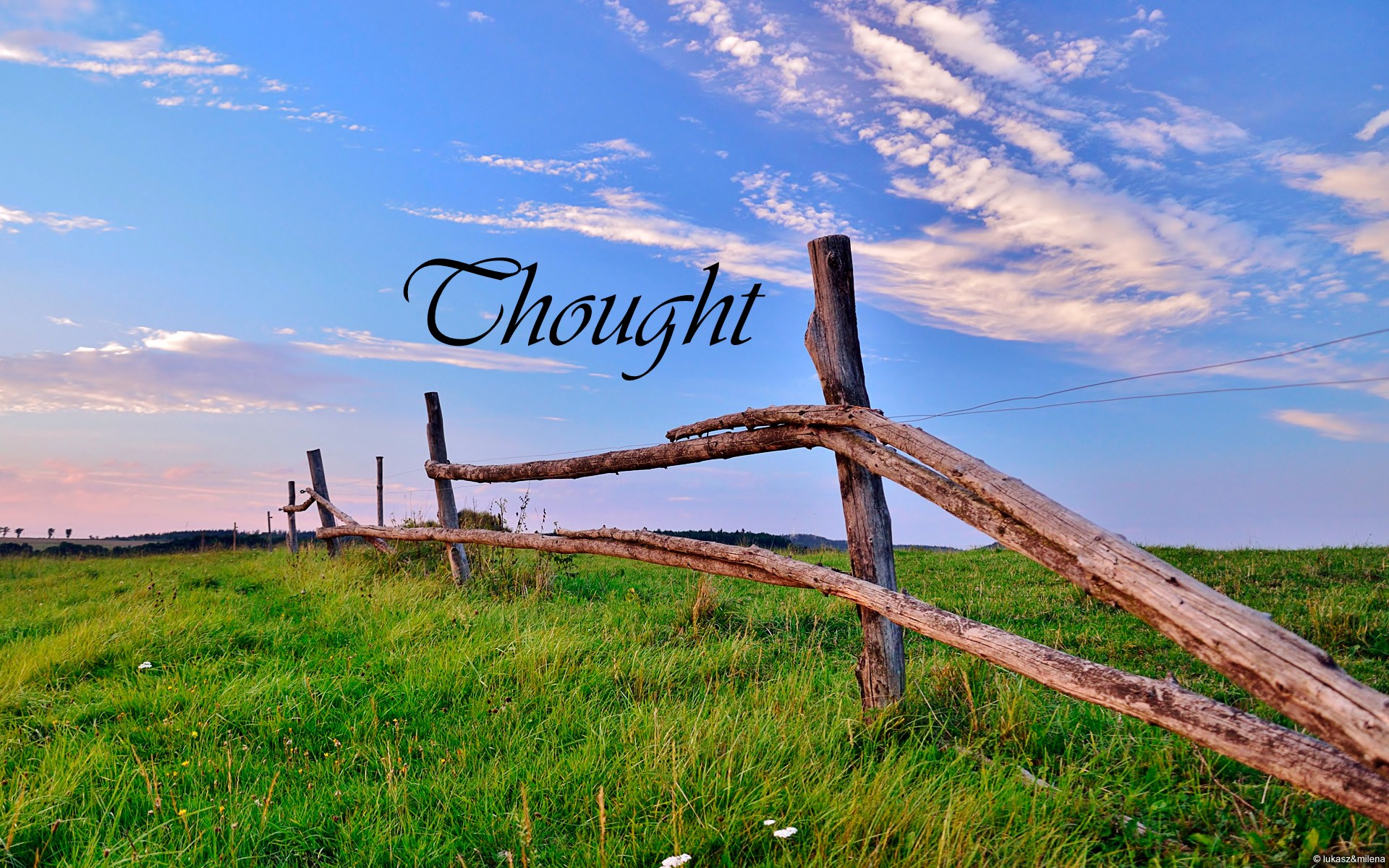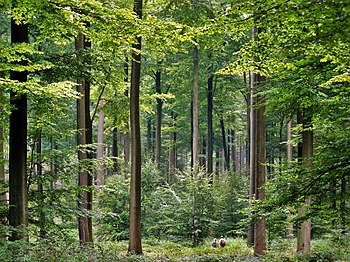
even, dense and old stand of beech trees (Fagus sylvatica) prepared to be regenerated (watch the young trees underneath the old ones) in the Brussels part of the Sonian Forest (Forêt de Soignes – Zoniënwoud) in Belgium (Photo credit: Wikipedia)
For years already, I claim we should treat plants and animals as subjects but also as living beings created by the Divine Creator, who has given them for our use but not mis-use or maltreatment. I always claimed they too have feelings and ways of communicating. In the 1970ies I followed many scientists who tried to proof and did proof how plants also have feelings and communicate with each other.
Though at regular times people seem to be reminded of it. Because too often man forgets that he is not alone having feelings and able to communicate with others of their own sort properly.
It is long known to biologists that trees in the forest are social beings. They can count, learn and remember; nurse sick neighbours; warn each other of danger by sending electrical signals across a fungal network known as the “Wood Wide Web”; and, for reasons unknown, keep the ancient stumps of long-felled companions alive for centuries by feeding them a sugar solution through their roots.
The German Peter Wohlleben studied forestry and spent over twenty years as a civil servant in the forestry commission. For him trees are his life and for that reason he also gave up his job by the state forestry because he wanted to put his ideas of ecology into practice. He now runs an environmentally friendly municipal piece of woodland in the village of Huemmel, holds lectures and seminars and has written books on subjects pertaining to woodlands and nature protection so those interested can accompany him through the forests of his homeland and the whole world.
The
Hidden Life of Trees describes how
trees are like human families. We as
human beings only think of ourselves being able to make a nice
family, though many make a mess of it, and when watching Danish television series I even wonder if there are normal
Danish people walking around in the North, who can have a normal
family life. In the series we come to see they all seem to be
unfaithful.
In
nature we see better build ups. Tree parents living together with their children, communicating with them, and supporting them as they grow, sharing nutrients with those who are sick or struggling, and even warning each other of impending dangers. With their newfound understanding of the delightfully complex life of trees, readers will never be able to look at a walk.

The deep dark forest One of the tracks through Pantmaenog Forest. There are prehistoric tumuli marked on the map here but they are difficult to find among the dense conifers. The trees here were planted after Bellstone quarry closed in 1908 and some of the old quarry workings are also concealed by the forest: human beings making their mark on the landscape in a variety of ways. (Photo credit: Wikipedia)
Since it first topped best-seller lists last year, Mr. Wohlleben has been spending more time on the media trail and less on the forest variety, making the case for a popular reimagination of trees, which, he says, contemporary society tends to look at as “organic robots” designed to produce oxygen and wood.
Though duly impressed with Mr. Wohlleben’s ability to capture the public’s attention, some German biologists question his use of words, like “talk” rather than the more standard “communicate,” to describe what goes on between trees in the
forest. But no matter how you want to call that communication we should come to understand that it is really communicating, no matter if you want to call it
talking or something else.
It is also different with
human beings who think they communicate and are on
social media, thinking they have so many
friends, but in reality do not have many
friends nor
comrades and do not really have any real communication going on between all those people. We did not mind to run around in that what
God had created us and did not have to hide anything for others, always able to keep faithful to the one we loved and where we choose for. But to day they want to shine and glitter in fashion clothes but are fast to take those cloths of in the hidden to do things we would have found inappropriate when there was not a strong connection with each other. But to day they seem to change of girl like they change of underpants, and often there is not much conversation going on and lots of time it is just a one night stand with no further communication at all. They have become worse than animals. (Are am I looking at it too pessimistic?)
Whilst I do believe those trees have much more communication going on than their human counterparts who are not afraid to kill more and more of those air-cleaners, not seeing that they are polluting more and more their own environment, making it poorer and poorer. Even those Germans who are reputed to have a special relationship with the forest are a kind of a cliché and it can well be that those Germans do not love their forest more than Swedes or Norwegians or Finns.
When I lived and worked in Germany, for relaxation I went into the woods around Köln and went swimming in open air. Then I could encounter many like minded nature lovers who wanted to be one with it and, like me searched for ways to respect it and to make properly use of feeding us in a clean and appropriate way. No chemicals, no additives, all pure whole grain and pure natural food.
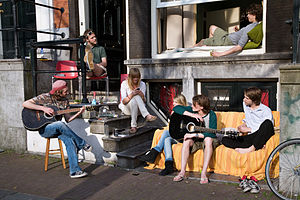
Young musicians living in a shared community in Amsterdam.
 Though when I look at how enthusiast we where in the 1960–70ies and had so many dreams, being called ‘flower power‘ people, many not understanding our idea of sharing and love and making a collective community, kibbutz or commune, many of them have gone far away from their idealism and the last few months we see many things we fought for, being undone in a very short time.
Though when I look at how enthusiast we where in the 1960–70ies and had so many dreams, being called ‘flower power‘ people, many not understanding our idea of sharing and love and making a collective community, kibbutz or commune, many of them have gone far away from their idealism and the last few months we see many things we fought for, being undone in a very short time.
Though might we see somewhere some light shining in the dark, perhaps getting back some younger ones again being interested in nature and how we should behave in it? Can it be that there are again seeds planted for people willing to reconsider our human behaviour in the big universe?
For sure it is high time that people are going to understand the need of forests and green spaces around our busy roads and living estates. Yesterday it was again on the news that in the
Kempen 122 ha of woods has to be offered for sand-winning, as if it is nothing. Man also thinks it is alright to artificially space out trees, but forget that shall not give the same intensification as wooded areas. The plantation forests that make up most of West Europe’s woods ensure that trees get more sunlight and grow faster. But,
naturalists say, creating too much space between trees can disconnect them from their networks, stymieing some of their inborn resilience mechanisms.
Intrigued, Mr. Wohlleben began investigating alternate approaches to forestry. Visiting a handful of private forests in Switzerland and Germany, he was impressed.
“They had really thick, old trees,”
he said.
“They treated their forest much more lovingly, and the wood they produced was more valuable. In one forest, they said, when they wanted to buy a car, they cut two trees. For us, at the time, two trees would buy you a pizza.”
But where are all those very thick trees gone, I wonder. In Belgium some years ago you could find also many places where you could enjoy the view of masterly or kingly majestic trees. The last two years , in the region where I live now (Leefdaal, Flemish Brabant), we have seen hundreds of trees being cut and not replaced.

Deep in the forest something stirred Go Ape, a series of aerial walkways, swings and zip slides in the forestry land north of Aberfoyle. Note – human beings included for a sense of scale. (Photo credit: Wikipedia)
Mr Wohlleben had also difficulties with the ministry of forestry but it turned out that Mr. Wohlleben had won over the forest’s municipal owners. 10 years ago, the municipality took a chance. It ended its contract with the state forestry administration, and hired Mr. Wohlleben directly. He brought in horses, eliminated insecticides and began experimenting with letting the woods grow wilder. Within two years, the forest went from loss to profit, in part by eliminating expensive machinery and chemicals.
We should enjoy those trees going to grow in all sorts of shapes, creating all sorts of designs in the air. When we look at ourselves, we should see that we also do not have a life going in straight lines. We also not all grow up straight. Why should trees have to grow up in those particular straight lines indicated by people in the office. The same as the right 25 cm cucumbers, the bananas with the drawn out moon shape, the tomatoes and apples which may not be too big or flat… everything should be according to the book and numbers indicated, … but life is not according the book of man … but should be according the Book of life …. with not everything exactly the same, and not always according to the books of man….
When is man going to see we should come back to being close to nature and to be part of nature again? And when is he going to understand we do need much more green around us … to have a colourful life full of health and joy?
++
Please also find to read:
- World Agenda for Sustainability
- Welfare state and Poverty in Flanders #1 Up to 21st century
- 2nd Half 20th Century Generations pressure to achieve
+++



 Though when I look at how enthusiast we where in the 1960–70ies and had so many dreams, being called ‘flower power‘ people, many not understanding our idea of sharing and love and making a collective community, kibbutz or commune, many of them have gone far away from their idealism and the last few months we see many things we fought for, being undone in a very short time.
Though when I look at how enthusiast we where in the 1960–70ies and had so many dreams, being called ‘flower power‘ people, many not understanding our idea of sharing and love and making a collective community, kibbutz or commune, many of them have gone far away from their idealism and the last few months we see many things we fought for, being undone in a very short time.



































